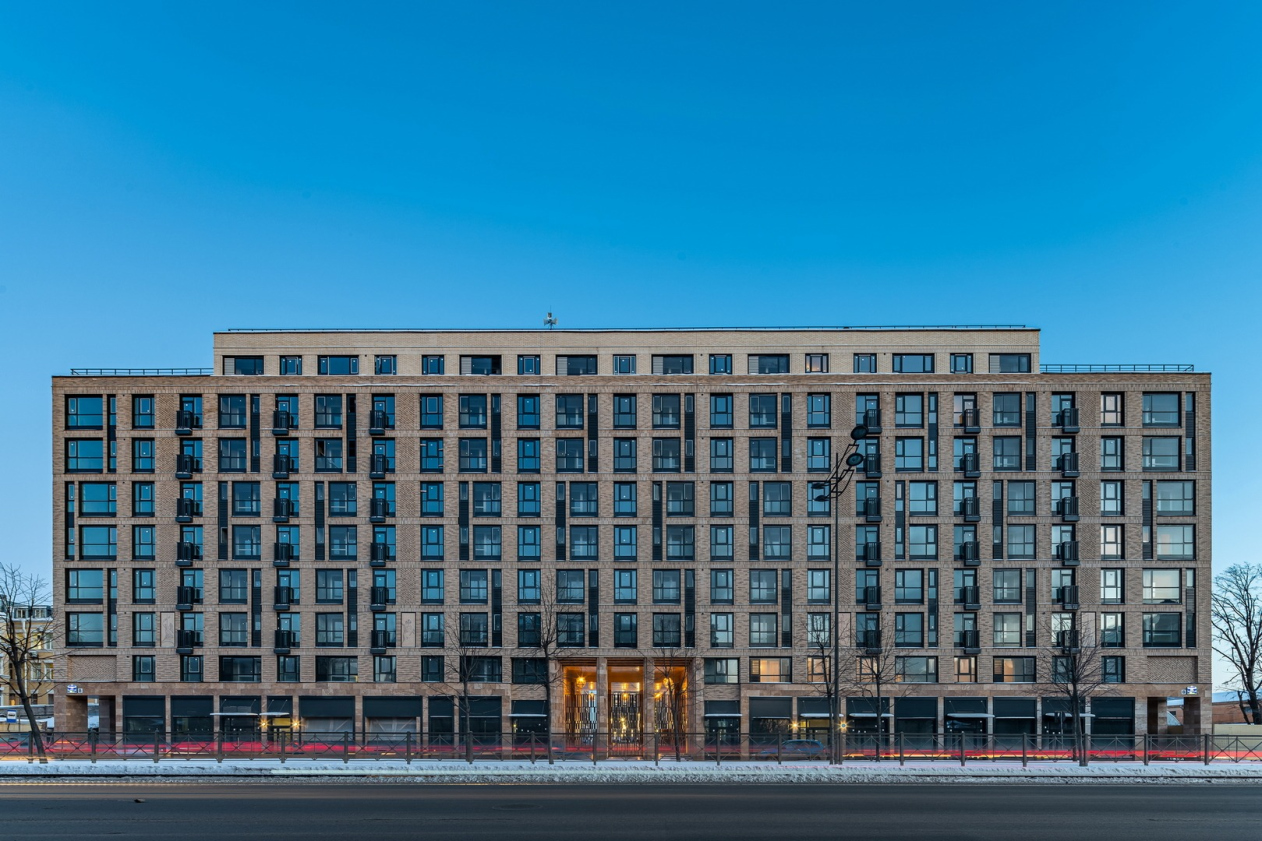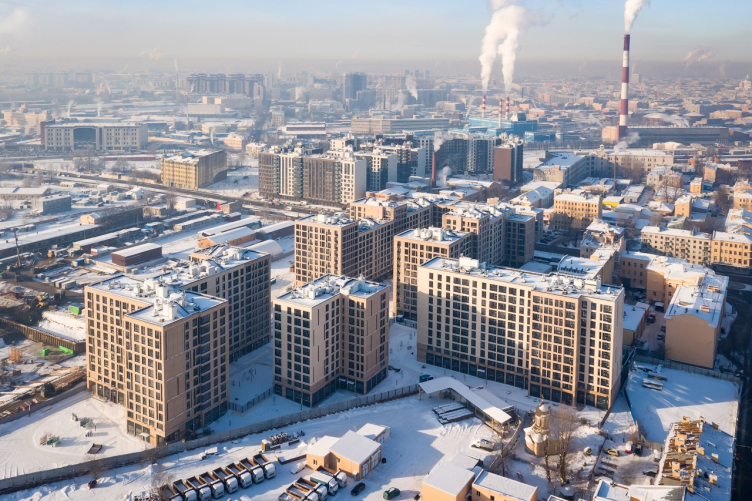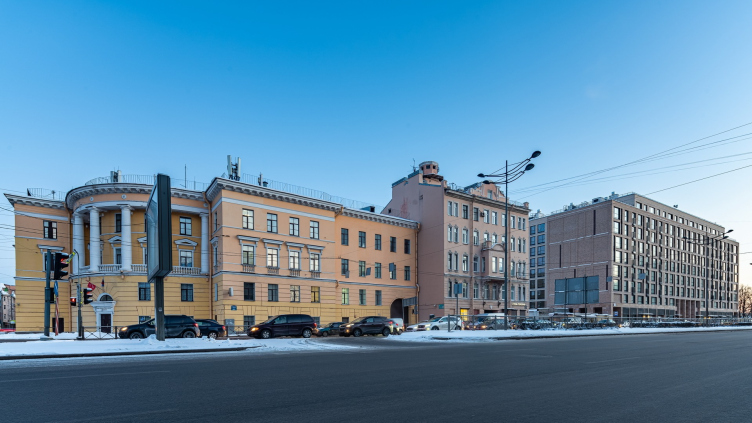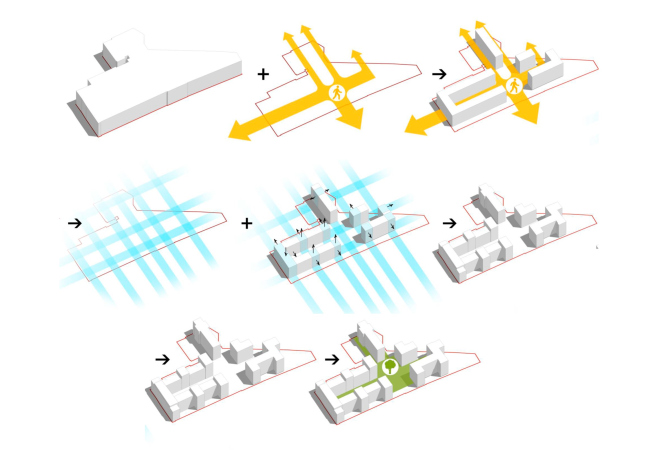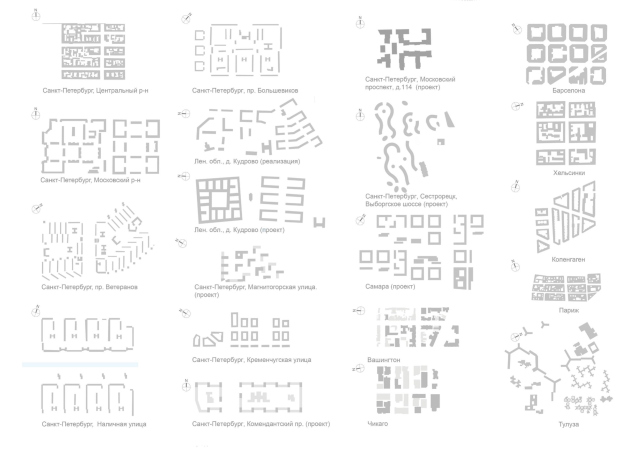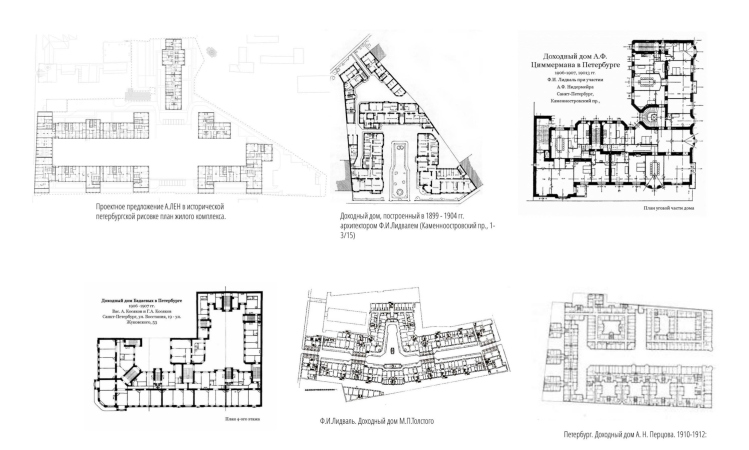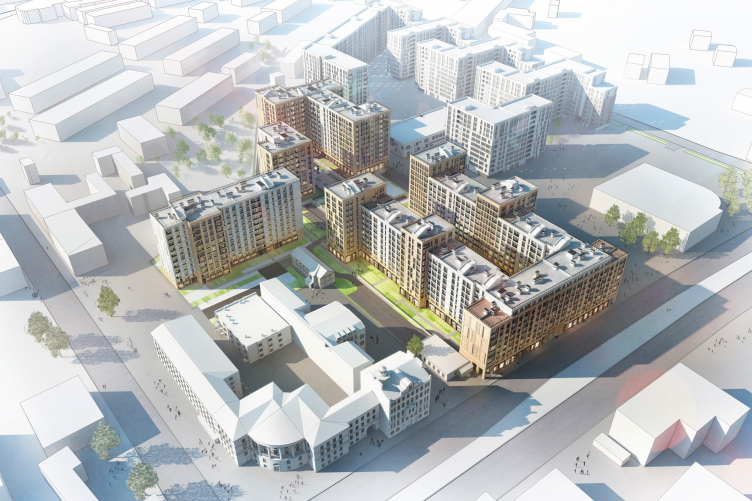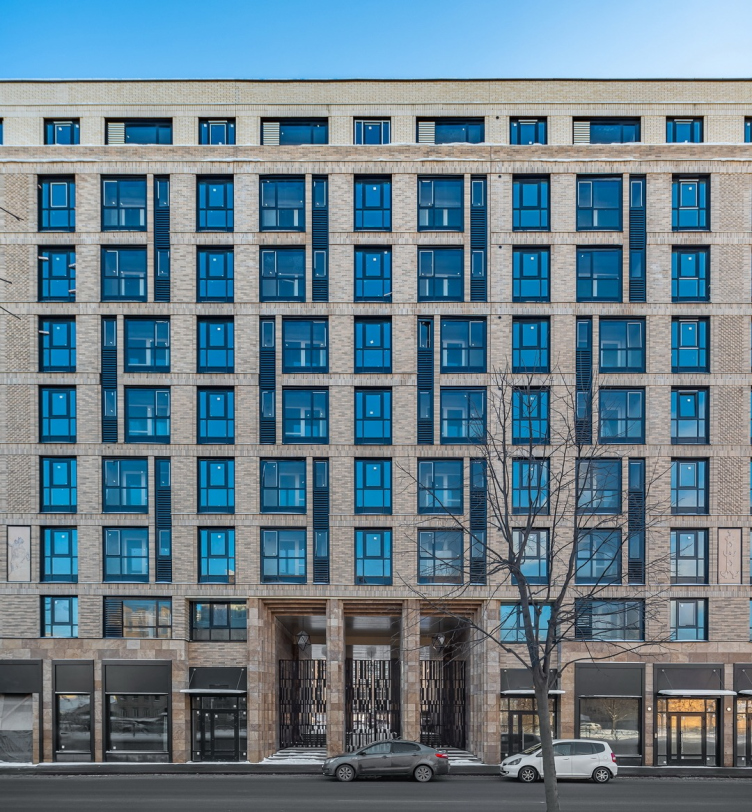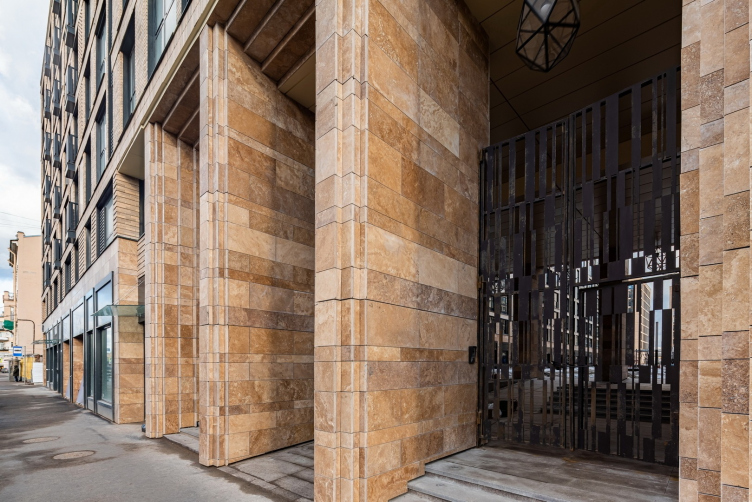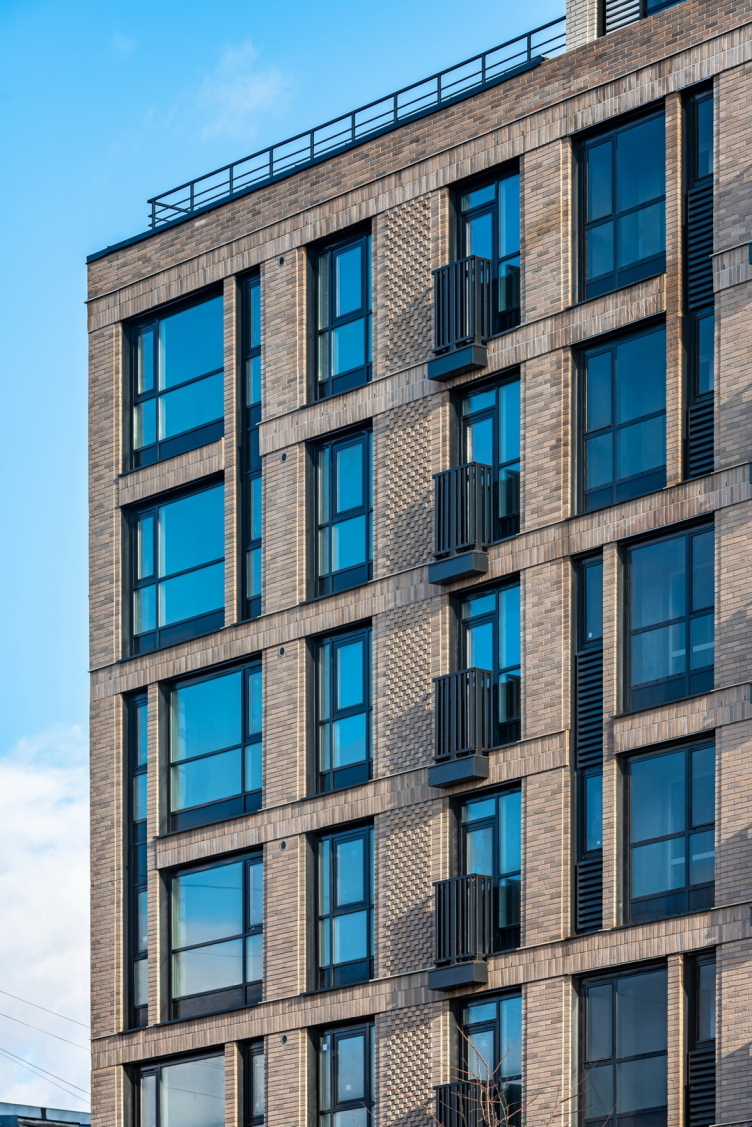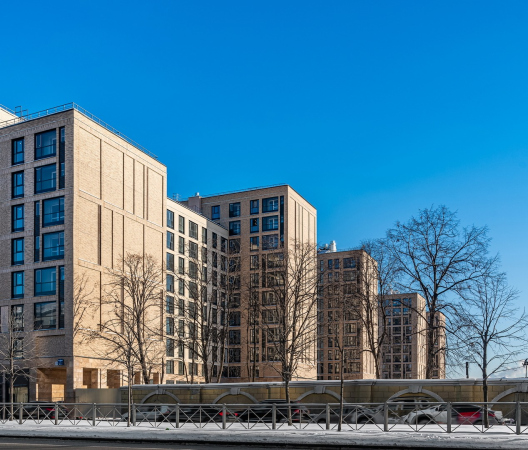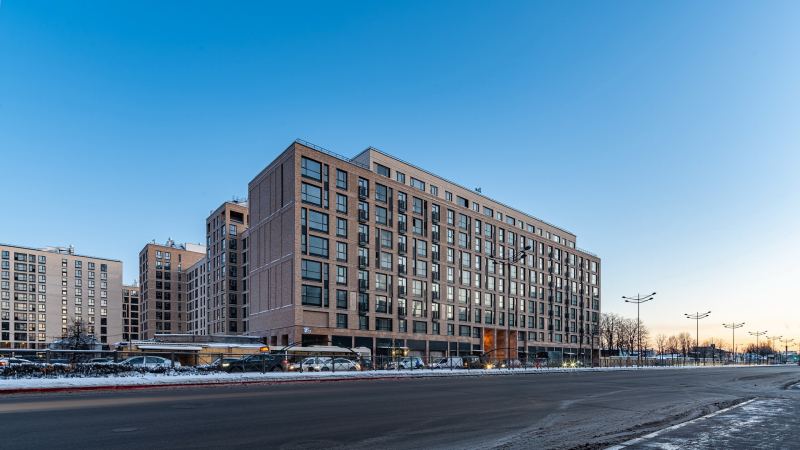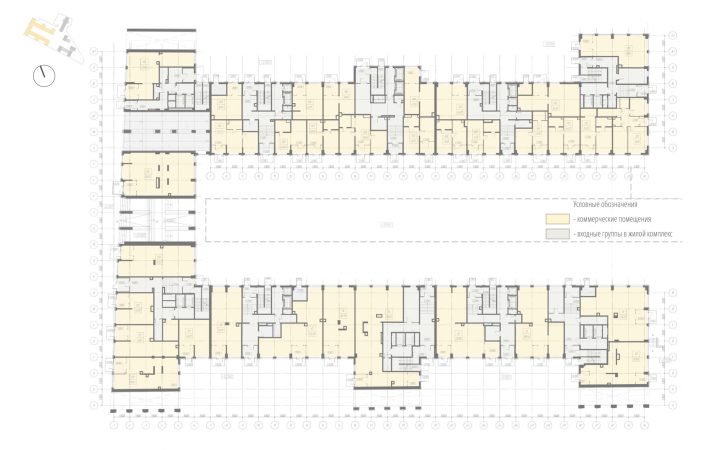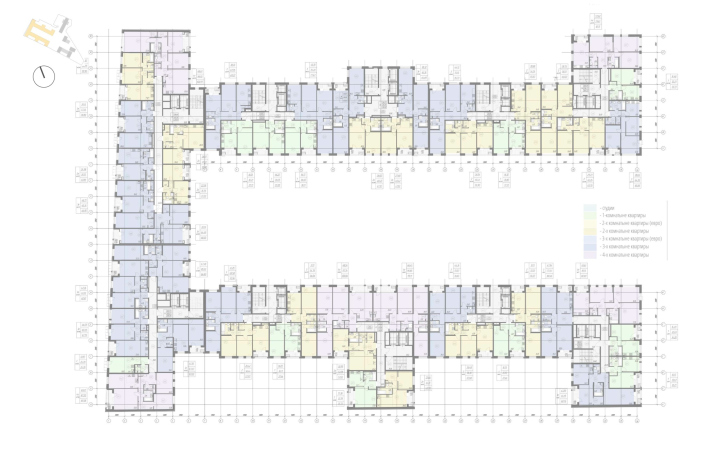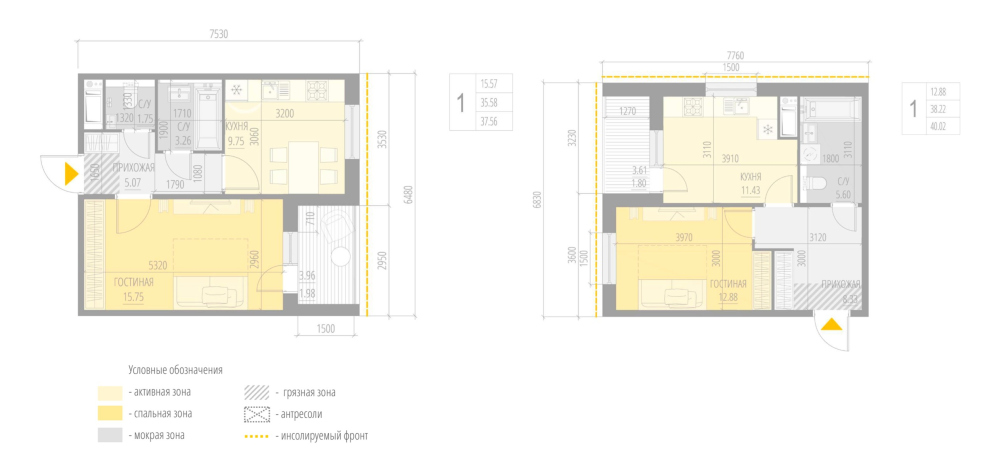The Third City
The project dates back to the competition 2016 that was organized by the Committee for Architecture and Town Planning of St Petersburg: the contestants were offered to develop concepts for renovating the industrial territories lying beyond the Bypass Channel, and come up with detailed guidelines for developing three pilot sites. According to the judging panel, for the Volkovskaya industrial estate the best work was submitted by MLA+, a Dutch architectural company that already has its own branch in St Petersburg. Glorax asked MLA+ to further develop the concept to the level of a master plan – and this is how Ligovsky City came about.
According to the idea proposed by MLA+, between St Petersburg (to which the historical refers), and Leningrad (which spreads beyond the Ligovsky Avenue), a “third city” may appear – modern and comfortable, connected with nature and the history of this place, eventful and diverse. The architects propose to divide the entire territory, about 100 hectares in size, into 14 blocks, 4 squares, and 4 park spaces. Each city block is special and is designed for groups of residents with a different lifestyle – conditionally speaking, family, business, and creative peopleб which, come to think of it, is a little bit reminiscent of Sloboda settlements, only in the new reality. The promotional video explains the concept in a very comprehensible and optimistic way.
Place of the Second Quarter in the “Third City”
To design and build some parts of the construction on the basis of the MLA+ concept, Glorax Development invited different architects. In 2017, A-Len architects started working on the project for the second quarter – its construction was completed in2020.
The developers are moving from west to east: the first (and the earliest) quarter of Ligovsky City was designed and built by A Architects on the opposite side of the avenue, while for the next stage of development of the Third City, comparatively recently still another project was approved, which, in turn, is located on the east side, on the extensive territory of the former Tovarno-Vitebskaya railway station; work on this site is also done with input from A-Len in cooperation with the Dutch KCAP and Orange. However, recently it was announced that part of this territory can be sold to another developer, which may alter all the current plans.
Let’s get back to the second quarter of Ligovsky City, however. It has been fully designed by A-Len architects and put into operation at the end of 2020. Currently, the work on land organization is being completed.
"Ligovsky City. The Second Quarter" housing complex.
Copyright: Photograph © Andrey Belimov-Gushchin / provided by A-Len
St Petersburg Town Planning
If we are to go back to the categories of the master plan proposed by MLA+, the “Second Quarter” belongs in the “blue segment”, which generally corresponds to business class – it is expected that it will become home to people who value moderate luxury, comfort, and safety. This status is further supported by the geographic location: the complex is situated far enough from the railroad line, its main facade overlooks the Ligovsky Avenue, and the view from the windows is ensured against being blocked by other buildings – in the near future, the “Borovaya” metro station will open here, around which an active city square must form. What also influenced the search for the architectural image of the “Second Quarter” was both Ligovsky Avenue itself with its rich history and the neighboring buildings on the land site – a tenement of the early XX century, and a Stalinist house, which, ironically, is now a police station.
"Ligovsky City. The Second Quarter" housing complex.
Copyright: Photograph © Andrey Belimov-Gushchin / provided by A-Len
The land site that was allotted to the “Second Quarter” is a narrow one, of a complex jagged shape, which is generally characteristic for former industrial estates due to a large number of owners, property encumbrances, and sanitary zones. A-Len decided to “tame” it by using traditional St Petersburg town planning techniques – and quite successfully. One must note that reference to historical planning techniques is something that we can see in the work of St Petersburg architects more and more often, becoming their “trademark technique”: let’s remember the courtyards of the “Russian House”, “Czar’s Capital” or the “Botanica” housing complex.
A-Len is going in the same direction, studying the spatial solutions, characteristic for the Ligovsky Avenue, as well as the famous tenements of St Petersburg, combining them with pedestrian axes and modern norms for greenery and fire parking zones.
Thus, the “Second Quarter” consists of four buildings that are grouped in respect to orthogonal pedestrian axes, forming a transparent rectangular city block with a sequence of courtyards. The elongated character of the yard is masked to a certain extent by protruding “tower” sections that are different in height, as well as the color and decoration pattern of the facade. Thus, from the side of Ligovsky Avenue, we see the compact “main” facade, behind which a developed residential structure is hidden in the depths of the block. Along the Ligovsky Avenue and from the side of the future “Borovaya” metro station, the bottom floors of the buildings are occupied by commercial premises. All the remaining “pieces” of the site are occupied by greenery and open-air parking lots. This way, a clear enough composition is formed, its only “odd” element being the house that stands closer to Rastannaya Street – but this house also plays its part, accentuating the second axis and completing the block with the police station.
"Ligovsky City. The Second Quarter" housing complex. The master plan
Copyright: © A-Len
"Ligovsky City. The Second Quarter" housing complex.
Copyright: © A-Len
The Architecture of Leningrad
As for the façades of the building, they unfold a different story, which is, by the way, very much in the spirit of MLA+: while the city plan is done more in the St Petersburg tradition, the imagery is more Leningrad – and this is exactly what yields the desired version of the “third city”.
The “main” façade, which opens up on the Ligovsky Avenue, again puts us in the mind of the Petrograd Side, but this time not to the tenements of the Kamennoostrovsky Avenue, but to the famous Lensovet house on Karpovka: what makes you think about similarity in this case is the flat elongated rectangular volume, slim “legs” of the gallery on the first floor, the central portal with three arches, as well as bas-relief inserts. As for the bas-reliefs, by the way, there are plans for replacing them with more detailed ones. The work was commissioned to the reputed sculptor Vladislav Manachinsky; it is supposed to take more non-trivial subjects – for example, depicting the notable buildings of Ligovsky Avenue that have not survived into the present.
"Ligovsky City. The Second Quarter" housing complex.
Copyright: Photograph © Andrey Belimov-Gushchin / provided by A-Len
"Ligovsky City. The Second Quarter" housing complex.
Copyright: Photograph © Andrey Belimov-Gushchin / provided by A-Len
The building, of course, also has fundamental differences and signs of modernity, first of all, a greater share of glazing and facing materials. The windows are arranged in an off-beat order characteristic of our time, but at the same time they have a clear rhythm and are located strictly symmetrically relative to the axis passing through the central portal. The varying thickness of the piers and grouping the windows within the height of two floors helps create an unobtrusive pattern, and, as they say at city planning sessions, “combat the monotony of the slab of the house”. Considering the fact that the first floor is fully coated with natural stone, quite unusual is the choice of material for the rest of the facade – this is brick laid in three different patterns, each of which emphasizes the tectonics of the building.
Originally, it was expected that red brick would be used but the architects considered it to be too dark for Ligovsky Avenue, opting for two lighter shades. There was also a proposal to adorn the facade with sculptures but the client turned it down.
"Ligovsky City. The Second Quarter" housing complex.
Copyright: Photograph © Andrey Belimov-Gushchin / provided by A-Len
"Ligovsky City. The Second Quarter" housing complex.
Copyright: Photograph © Andrey Belimov-Gushchin / provided by A-Len
"Ligovsky City. The Second Quarter" housing complex.
Copyright: Photograph © Andrey Belimov-Gushchin / provided by A-Len
The “tower” sections repeat the “grand” building in a slightly simplified form. From the side of the future metro station, the side walls had to be made blind in response to the fire safety regulations – but then again, the resulting firewalls give this part of the complex a rhythm, similar to that of the housing complex on Traktornaya Street – yet another outstanding work by Soviet architects. The courtyards are decorated with brick of a lighter shade.
The apartment layouts are done in accordance with the original A-Len method: they are based on the resident’s portrait and his needs. The client commissioned the landscaping project to another company, because of which the logic of the concept was distorted a little by curvilinear shapes that appeared in the yard.
Making a recap: we can definitely say that the complex is very much St Petersburg in its spirit; its austerity matches the residents’ status, it was sturdily designed and sturdy built. The relief brickwork makes an interesting textured highlight; in addition, after the existing reliefs are replaced, the facades will become even more attractive to the passers-by – not just with their regular grid, creating order, but also with their detailed character, ensuring diversity, which today is a significant competitive edge. The “human-friendly” height of the 11-story buildings, the reserved natural tone of the facades, and the symmetry of the tripartite portal on the main facade, make the image of the new houses of Ligovsky City nobly satin, at the same time highlighting and maintaining a feeling of some immanent dignity, inherent to these houses.

